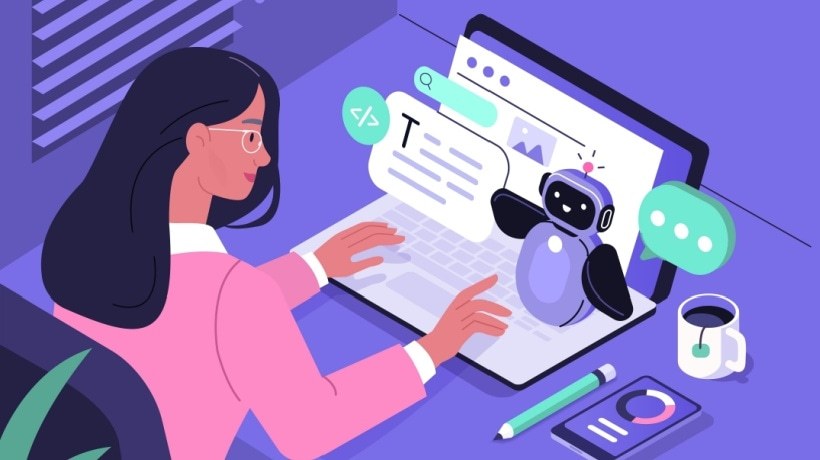Engineering Smarter Learning Systems With Data And Feedback
In an era of AI tutors, adaptive assessments, and real-time dashboards, the L&D world is having a quiet revolution—and its name is Learning Engineering. But let's be clear: Learning Engineering is not just a fancier title for Instructional Design. It's not limited to EdTech startups or academic circles. Learning Engineering is the future of performance-focused L&D—where learning design meets data science, feedback loops, and human-centered iteration.
Inspired by IEEE's definition, Learning Engineering brings together cognitive science, systems thinking, AI/ML, data analytics, and Instructional Design to create scalable, optimized, measurable learning ecosystems. Here's how this evolving discipline is reshaping how we build, test, and scale learning in the workplace—and why every L&D team should pay attention.
What Is Learning Engineering, Really?
According to IEEE ICICLE (Industry Consortium on Learning Engineering), Learning Engineering is "The application of engineering principles to learning systems, with iterative development grounded in data, science, and human-centered design."
Let's break that down:
- It's not just designing content; it's building systems that adapt, improve, and optimize over time.
- It's about feedback loops, not just feedback forms.
- It applies the scientific method to learning: hypothesis→test→measure→iterate.
Think of it as learning by design and refinement by data.
Why It Matters: The Limits Of Traditional Learning Design
In many organizations, L&D still operates on:
- Static needs assessments.
- One-time course builds.
- Generic evaluations (smile sheets, MCQs).
- Linear learning journeys.
The result? Learning that's content-rich but impact-poor. Completion without competence. Engagement without outcomes. Learning Engineering offers a path forward: building learning like a product, not a project.
The Power Of Adaptive Feedback Loops
At the heart of Learning Engineering is the idea of closed-loop systems—learning environments that:
- Deliver content.
- Capture behavioral and performance data.
- Analyze that data in real time.
- Adapt the experience (or interventions) accordingly.
This creates a virtuous cycle of continuous improvement for both the learner and the system.
Examples
- Adaptive onboarding paths that shorten or expand based on learner confidence.
- AI-powered role-plays that change difficulty based on past responses.
- Practice modules that surface based on performance gaps in QA or CRM data.
Engineering mindset: If it can be measured, it can be improved. If it can be improved, it can be engineered.
Key Pillars Of Learning Engineering In Practice
1. Data-Driven Design
Begin with performance data, not content checklists.
- What behaviors are top performers showing?
- What systems are underused or misused?
- Where does learning break down post-training?
Action: Build learning objectives tied to observable outcomes, not abstract knowledge.
2. Iterative Prototyping
Like software engineers, learning engineers ship minimum viable learning, then iterate.
- Launch early versions.
- Collect user analytics.
- A/B test content or format.
- Adjust in sprints, not semesters.
Action: Use pilot groups to test effectiveness before global rollout.
3. Embedded Analytics
Move beyond LMS completion data. Integrate:
- Tool adoption logs.
- Conversation quality (via AI).
- Simulation scores.
- Real-world KPIs (e.g., CSAT, deal size, escalation rates).
Action: Create dashboards that connect learning interventions to operational outcomes.
4. Human-Centered Optimization
While data fuels the system, humans still guide the goals.
- Observe how real users interact with the content.
- Conduct UX testing on your LMS and mobile journeys.
- Interview learners and stakeholders regularly.
- Design for accessibility and neurodiversity.
Action: Use learner behavior—not just learner feedback—as your design compass.
5. Systems Integration
Learning Engineering doesn't happen in isolation. It works best when plugged into:
- Performance management systems.
- CRM/ERP data streams.
- QA and support tools.
- Talent mobility frameworks.
Action: Build APIs or data syncs between your LMS and the systems where performance lives.
From Instructional Design To Learning Engineering: A Shift In Mindset
| Traditional L&D | Learning Engineering |
| Content-focused | Outcome-focused |
| Linear journeys | Adaptive pathways |
| Static course builds | Iterative learning systems |
| Feedback via surveys | Feedback via analytics and behavior |
| Isolated tools | Integrated data ecosystems |
It's not about abandoning Instructional Design—it's about elevating it through systems thinking.
Getting Started: How L&D Teams Can Embrace Learning Engineering
You don't need a PhD or a Machine Learning model to start. You need a shift in approach:
- Define clear performance-based learning goals.
- Map data signals you can access across systems.
- Collaborate with RevOps, QA, and HR Analytics.
- Start with a pilot or critical learning journey.
- Instrument feedback loops into the experience from day one.
Start small. Iterate fast. Scale what works.
Final Thought: Design Learning Like An Engineer, Deliver Like A Strategist
In a world of continuous change, the best learning systems won't be the most beautiful. They'll be the most adaptive, data-informed, and outcome-aligned. Learning Engineering offers us the blueprint to create experiences that don't just teach—they evolve. Whether you're building a global onboarding program, a sales enablement track, or a simulation lab for soft skills—think like an engineer. Because the future of learning isn't content. It's intelligent, human-centered systems that learn as they teach.






![Prompt Engineering: Harnessing AI To Create Immersive Learning Experiences [eBook Launch]](https://cdn.elearningindustry.com/wp-content/uploads/2024/07/Harnessing-AI-Prompt-Engineering-For-Immersive-Learning.jpg)


